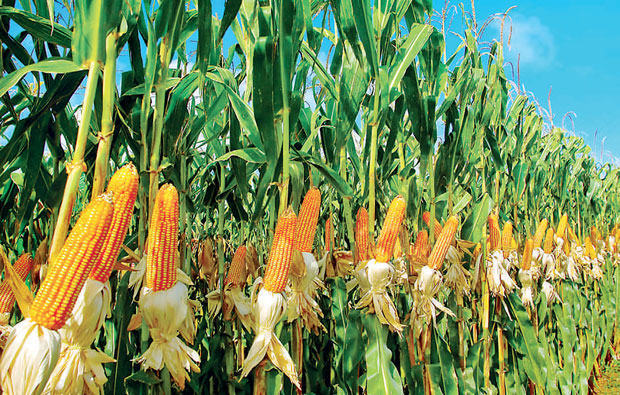28 Jun 2017 - {{hitsCtrl.values.hits}}

The authorities’ excessive measure to protect the corn farmers would have a devastating impact on the chicken industry in Sri Lanka, the industry specialists warn.
Sri Lankans rely heavy on chicken to meet their required protein needs and the increase in the prices will limit the consumption of chicken to a large extent, resulting in malnutrition.
The annual per capita consumption of chicken in Sri Lanka, which was barely 2.5 kilogrammes a decade ago, has now reached 10.5 kilogrammes and is likely increase further in the near future. While consumption has risen more than threefold, the prices have remained virtually unchanged during this period in comparison
to inflation.
The government in a bid to prevent the chicken prices from increasing introduced a control price of Rs.380 per kilogramme and the price remains at Rs.420 per kilogramme even after the control price was removed by the government. But this situation can change quickly if the authorities continue the policy to protect the corn farmers and levy taxes on corn, which will further increase the corn prices, allege industry sources.
Furthermore, the chicken producers in Sri Lanka have been able to keep the chicken prices at reasonable levels by adopting extremely efficient practices across their production, processing and distribution systems. They have implemented global best practices in technology and breeding, which have led to more efficient production and significant reduction in costs, which they have passed on to the consumer.
Similarly, the chicken producers are heavily taxed by the government, which is as high as Rs.85 per kilogramme. The total tax income from the chicken industry is colossal. The current corn prices are on the rise and have increased from Rs.42 to Rs.52. This will have a direct impact on the chicken prices resulting in a price hike of at least Rs.20 per kilogramme. This is in the backdrop where the world market prices of corn stand at Rs.35.
The government’s measures to impose a tax of Rs.10.50 per kilogramme of corn will further jeopardize the poultry industry in Sri Lanka. The repercussion of the poultry industry suffering will in turn have a very negative effect on the corn industry, which will lose its market in the face of low demand for corn. Furthermore, in the wake of the local poultry industry weakening, the government coffers will suffer heavily, losing the Rs.85 per kilogramme tax revenue and will need to import chicken, which will cost the country US $ 20 million per month of foreign currency.
Despite all these drawbacks, the chicken producers such as Crysbro have gone a step further by fully integrating its entire operations. Crysbro carries out virtually every activity that is required to produce its ‘Fresh Upcountry Chicken’. From producing grains in its extensive farmlands, converting the grains into poultry feed at its feed mill plant, to raising parent birds and broilers, processing meat and packaging it – right down to delivering the chicken to supermarkets and retail outlets. In fact, Crysbro is Sri Lanka’s first chicken producer to achieve full vertical integration.
Yet, the rising costs remain an issue that the chicken producers have to constantly battle against. On top of this, maintaining a corn protectionist policy by the government will further jeopardize the chicken industry in Sri Lanka, leading to an increase in chicken prices and putting at stake the livelihoods of thousands employed in the industry.
The excessive corn protectionist policy also may seem unusual, when one considers the fact that the poultry industry continues to make a significant contribution towards the national economy. In addition to saving millions in foreign exchange, which would otherwise be spent on importing chicken, the industry offers direct and indirect employment to hundreds of thousands of people. Crysbro alone offers employment to thousands of people as contract breeders, helping their families rise above the poverty line.
In making chicken affordable to a majority of people by keeping the prices low, through efficient production practices, the chicken producers have played a singular role in increasing the per capita consumption of animal protein, which is vital for the physical development and well-being of the population, especially the youth. It should be noted that chicken remains the most affordable source of non-plant-based protein in Sri Lanka.
If the authorities are serious in maintaining the current chicken prices, it is required to give relief to the chicken producers, providing them with more incentives, as well as a conducive regulatory and fiscal climate could help the industry grow. In fact, if one considers the international per capita consumption of chicken which currently stands at 17 kilogrammes, about twice our national average. Sri Lanka’s chicken industry still has a long way to go but the corn protectionist policy and increase of corn prices will have a very negative impact on it. Sri Lanka’s poultry industry is one of the most efficient industries but now at the risk of facing destruction due to the incorrect short-sighted policies of the government, an industry specialist said.
25 Nov 2024 19 minute ago
25 Nov 2024 50 minute ago
25 Nov 2024 2 hours ago
25 Nov 2024 2 hours ago
25 Nov 2024 2 hours ago